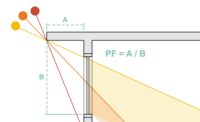The Growth of Prefabricated Exterior Walls

By using Integrated Project Delivery design and construction approach, early involvement with Jersey Panel provided engineering, fabrication, shipping, and installation of the 121,000 square-foot wall panels, that included: StoPanel Brick ci with Masonry Stone Veneer, StoPanel Metal ci, and StoPanel NExT ci using Sto’s unique Stolit Lotusan textured finish. Photo courtesy of Sto Corp.
Construction has always been an exercise in compromise and problem solving. On every project, some things need to give, for reasons of cost, practicality, or factors outside the control of the project team. Other aspects, like safety and code compliance, cannot be compromised. The success of every project depends on finding effective solutions to unique and complex challenges.
Prefabricated exterior walls are changing the game in construction by providing customized constructability solutions. After maturing for decades, practices for designing, fabricating and installing prefabricated exterior walls have evolved to the point where design teams are realizing the benefits of considering prefabrication early in project design.
Start by Starting Over
The decision to prefabricate has historically been driven by building enclosure installers, and facilitated by the design-build process. Confronted with difficult situations, such as an aggressive construction schedule, need for cost and schedule certainty, limited access to the jobsite and a host of other issues, it has been installers who have brought prefabrication to the attention of the project team. In that scenario, some pushback is inevitable.
By the time a design and construction team has been established, building design is substantially complete. To prefabricate exterior walls, a degree of redesign is needed. Typically, manufacturers of prefabricated walls provide design-assist services to simplify this process. Nevertheless, redesign is never a prospect that is joyfully greeted. Only after specific, compelling benefits are established and quantified will redesign occur.
Success builds success. As the benefits of project redesign for prefabrication have proven worthwhile, more design teams are taking a serious look at prefabrication, driving explosive growth in exterior wall prefabrication.
One example of a project redesigned for prefabrication is 109 King Avenue in Newcastle Ontario Canada. Located in a historical area, it needed to provide an authentic brick appearance consistent with surrounding buildings. However, the weight of brick and supporting lintels, particularly in narrow sections adjacent to windows, made site construction difficult. The looming Canadian winter was also a consideration. Time invested in redesign for prefabrication paid off with fast, cost-effective project completion.
Hospitals Lead
Schedule certainty is a key driver for hospitals. Consider the carefully orchestrated chain of events that culminate in the opening of a new hospital. Expensive, sophisticated equipment must be installed, set up and ready for use. Teams of doctors and nurses are recruited, trained and ready to go. Support staff and everything needed to ensure patient wellbeing must be in place. All contingencies must be prepared for, from scheduled surgeries to medical emergencies. Delaying hospital opening by even one day is not acceptable.
Enter prefabrication. By manufacturing in an offsite factory, walls are fabricated under controlled conditions, then packaged and prepared for delivery when the project is ready to receive them. Installation of completed wall panels takes days or weeks, not months. For example, at the UCF Lake Nona Medical Center, an 8-person team installed 136 exterior wall panels in only 11 days
Thrifty and Good Looking
Every construction project is about creating value, and few things compare to stunning aesthetics when it comes to value. Virtually any exterior aesthetic can be prefabricated. Design freedom need not be compromised to realize the benefits of prefabrication. For example, the Inspira Medical Center in Mullica Hills, N.J. combined flat and radiused panels, a microtextured self-cleaning finish and thin stone veneer to create a dynamic appearance.
Construction economics do change, however. Some aspects of prefabrication add up-front cost, others create substantial project savings. Prefabricated walls avoid the time and expense of scaffolding a building, mobilizing a large install team, and installing the building enclosure as weather permits. Far fewer people are needed, an advantage in today’s tight labor market. However, wall sections must be engineered in advance, manufactured, placed in inventory, and paid for in advance. The walls then need to be transported to the jobsite.
While every project is different, there are common elements to projects where economics strongly favor prefabrication.
Urban High-Rise Chic
Dense city cores favor tall buildings. As buildings get taller, scaffolding becomes more expensive, heavy materials must be raised high above the ground, weather challenges compound, and safety concerns become more pressing. Further, laydown area for staging construction is often limited, and concerns about construction waste are elevated. At the Hilton Canopy Hotel in Tempe, Ariz., one existing building was only 3 feet away from the project. Prefabricated exterior walls simplified installation and trimmed more than 3-months from the project schedule, easily justifying redesign for prefabrication.
For urban high-rise construction, it often is much more economical to bring finished wall panels to the site and hoist them into place with a crane. On the Aloft & Element Hotel project in Austin, Texas, a six-person team installed a 33-floor exterior envelope in 66 days. On-site installation is not rushed; it is fast because most of the work has been completed at the factory. Safety is greatly improved by the reduced installation team size, elimination of scaffolding, and the brief time the team is on-site.
An added benefit is drastic reduction in jobsite construction waste. Building product packaging, excess materials and windblown debris are examples of construction waste that does not reach the jobsite. These items are managed much more efficiently at the prefabrication factory.
Time is Money
Time is important in absolute and relative terms. Hospitals and student housing projects need to be completed on a specific date. For buildings that create high cashflow, completing construction as quickly as possible can dramatically improve project ROI. Quick serve restaurants, hotels, casinos and retail complexes are examples of high cashflow projects that benefit from accelerated construction schedules.
Restoration projects can also face time constraints. The 309 East Paces Ferry Road project in Atlanta GA began with a 3D scan of the existing structure. Over 30,000 square-feet of exterior panels were prefabricated, allowing installation to be completed in four weeks, far exceeding expectations.
Time of year can also be a factor. For projects in cold climates, completing the building enclosure before the snow flies is often a priority, so interior work can be performed in inclement winter months.
The Human Element
To a large extent, building enclosures remain hand made. People do better work when they are comfortable, and are most comfortable when enjoying steady work in an indoor environment, with an employer that invests in developing their skills. The improvements in build quality evident in prefabricated exterior walls have many sources. One of them is the much better work environment it provides for the technicians who prefabricate walls.
The factory environment is also conducive to quality practices perfected in other industries. Each panel can be inspected before it is shipped, records kept on the design and fabrication of each wall panel, and production processes can be perfected over time.
Project Planning
While the prefabricated exterior wall industry has grown by successfully redesigning projects for prefabrication, in many cases prefabrication is considered after it is too late to change the design, or not considered at all. For those projects, the benefits of prefabrication are lost.
Designing with prefabricated exterior walls in mind has few costs and many benefits. Informed decisions made early in the design process optimize project outcomes and avoid project redesign costs.
An example of this is the LaPorte Hospital in Laporte, Ind. While in schematic design, the design team awarded a design assist contract to an engineering firm familiar with exterior wall prefabrication. Most of the engineering work would have been applicable to site-built or prefab construction. Design assist helped the project team realize the benefits of exterior wall prefabrication without the expense of redesign.
One to Many—Industrializing Prefabrication
From its roots as an outcome of installer-driven project redesign, the growth driver of the prefabricated exterior wall industry has transitioned to serial builders. From health care to hospitality to quick serve restaurants, companies that construct large numbers of similar buildings are increasingly designing their buildings to realize the benefit of prefabrication.
Led by prefabrication, the construction industry is on the cusp of rapid and substantial change. Standardized wall configurations open the door to mass production. That changes the game for exterior wall manufacturers. Investments in production capacity can be confidently planned, knowing that baseload demand for standardized wall sections will keep capacity utilization high despite the cyclical nature of construction.
With the economics of prefabricated exterior walls steadily improving, digitization of design and construction will turbocharge the pace of growth. Visualization tools will facilitate uniquely striking appearances constructed from standardized components. Engineering solutions will become faster and easier to implement. Much of the exterior wall market will transition from one-off custom solutions to off-the-shelf products that can be readily incorporated into building design.
This is an exciting time for the construction industry and for prefabricated exterior walls. From boutique to mainstream to revolutionary, prefabricated exterior walls are poised to rock the world of construction.
Looking for a reprint of this article?
From high-res PDFs to custom plaques, order your copy today!






